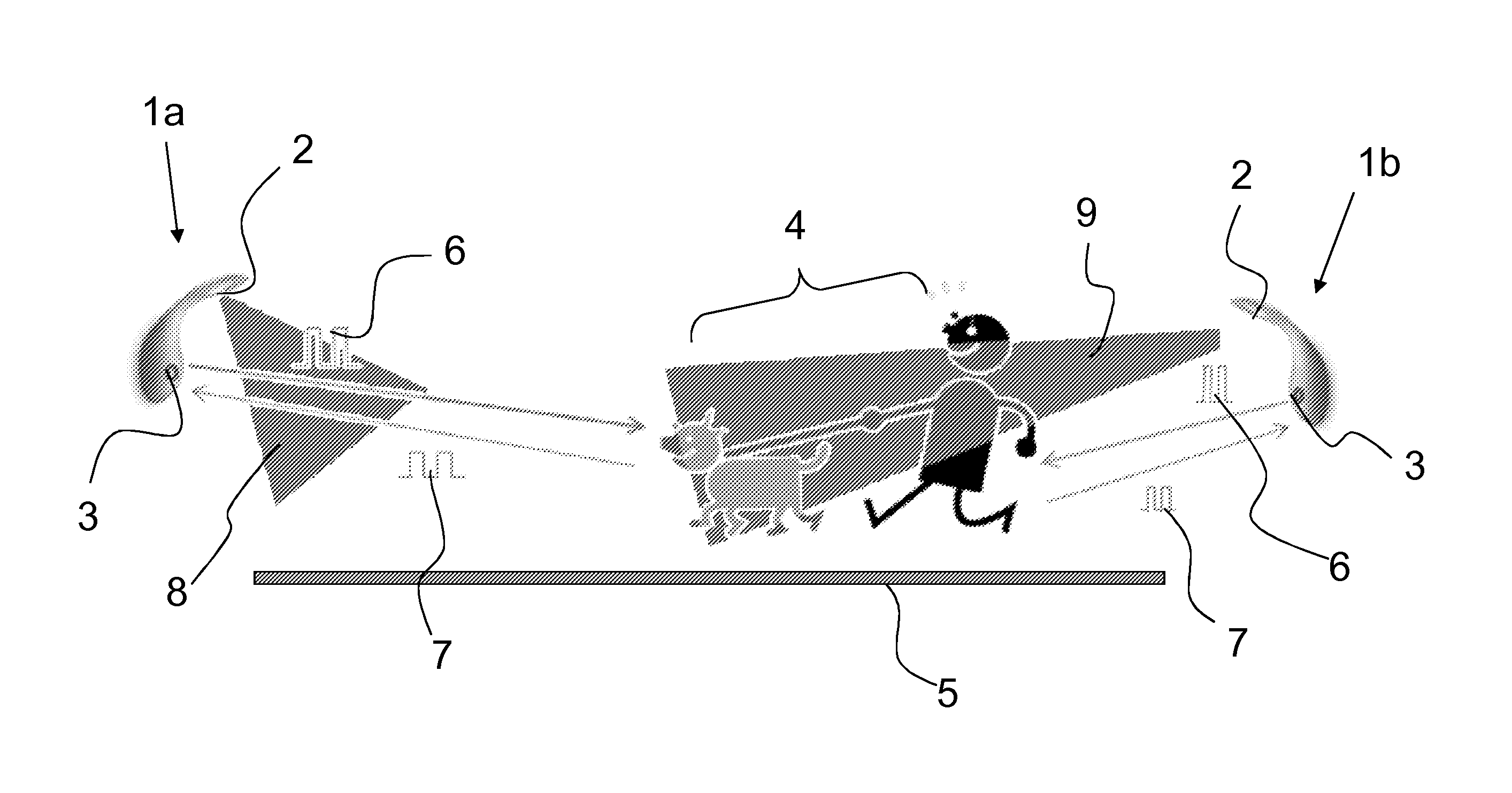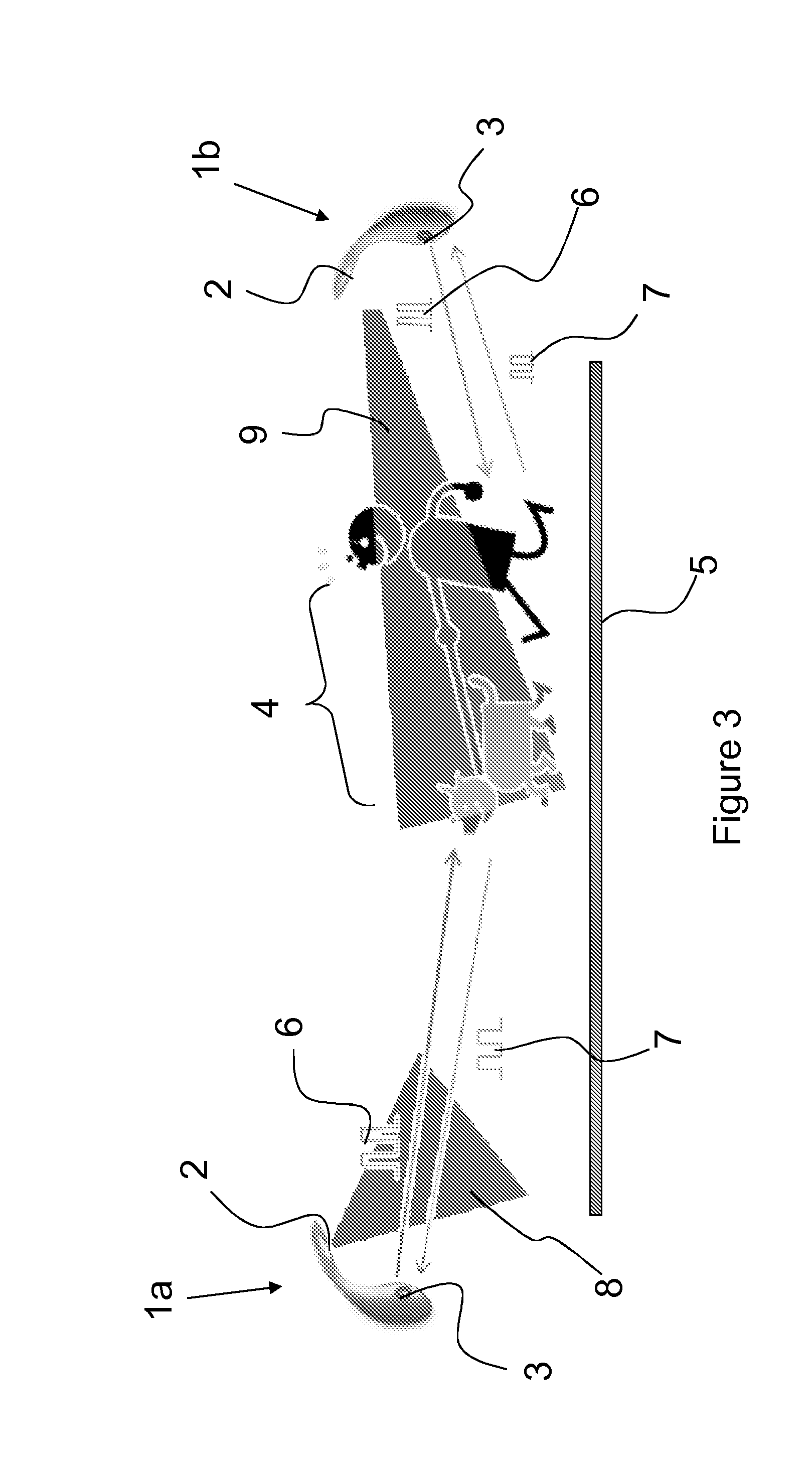Luminaire with a sensor that varies its activation in response to the presence or absence of objects
a technology of objects and sensors, applied in the field of luminaires, can solve the problems of greater number of lights that are deactivated, and achieve the effect of reducing power consumption and minimizing glar
- Summary
- Abstract
- Description
- Claims
- Application Information
AI Technical Summary
Benefits of technology
Problems solved by technology
Method used
Image
Examples
Embodiment Construction
[0026]It is known in the art to use ultrasonic sensors to measure a distance; a piezoelectric transducer releases an ultrasonic wave pulse of a controlled duration and frequency and then a sensor will detect any echo waves that are returned. The transducer may be the sensor; however, if the transducer and sensor are separate components then they must be located proximate to each other in order to obtain accurate measurements. The echo waves are the ultrasonic waves emitted by the transducer that have been reflected back from any objects to the sensor. The sensor is configured to time the difference between the emission of the wave and detecting the echo wave. This time, combined with knowledge of the speed of the wave in air, allows the distance from the sensor to the object to be determined. A suitable ultrasonic wave pulse might be about 20 pulses at a frequency of 40 kHz. Ultrasonic sensors of this type are well known in the art and do not form a part of this invention. For this ...
PUM
 Login to View More
Login to View More Abstract
Description
Claims
Application Information
 Login to View More
Login to View More - R&D
- Intellectual Property
- Life Sciences
- Materials
- Tech Scout
- Unparalleled Data Quality
- Higher Quality Content
- 60% Fewer Hallucinations
Browse by: Latest US Patents, China's latest patents, Technical Efficacy Thesaurus, Application Domain, Technology Topic, Popular Technical Reports.
© 2025 PatSnap. All rights reserved.Legal|Privacy policy|Modern Slavery Act Transparency Statement|Sitemap|About US| Contact US: help@patsnap.com



